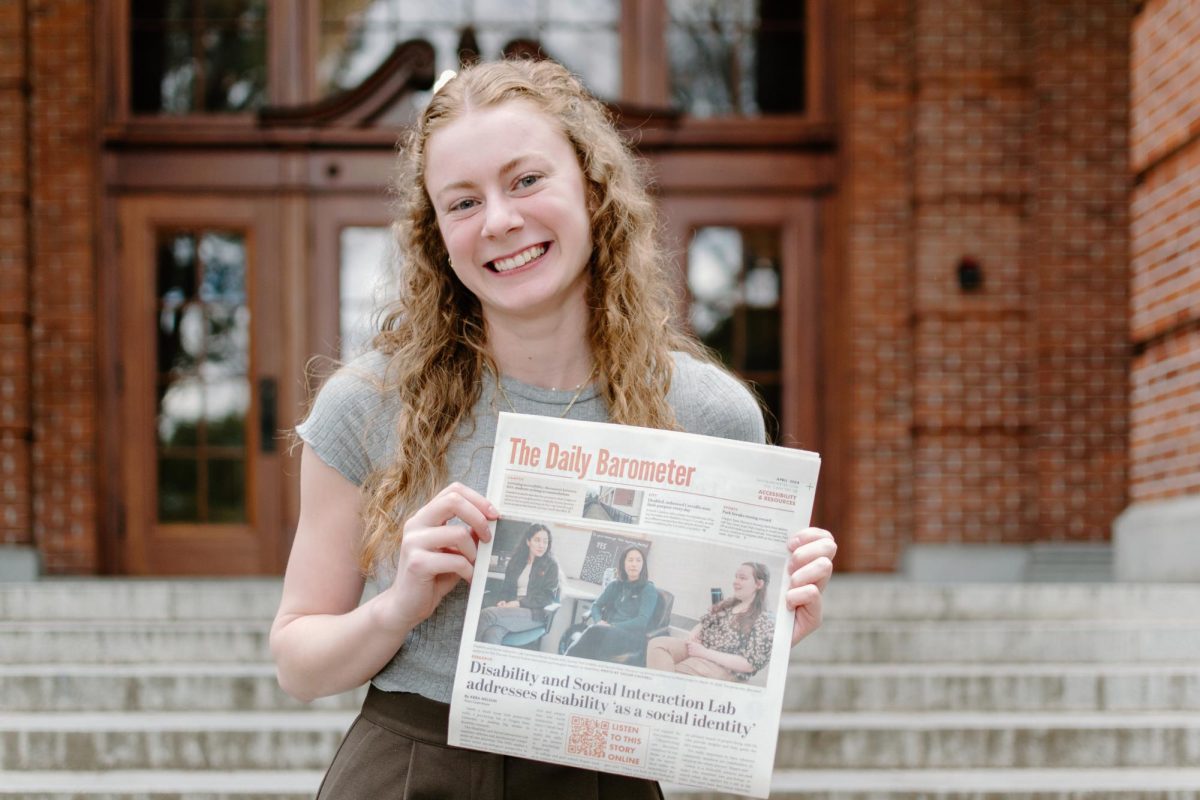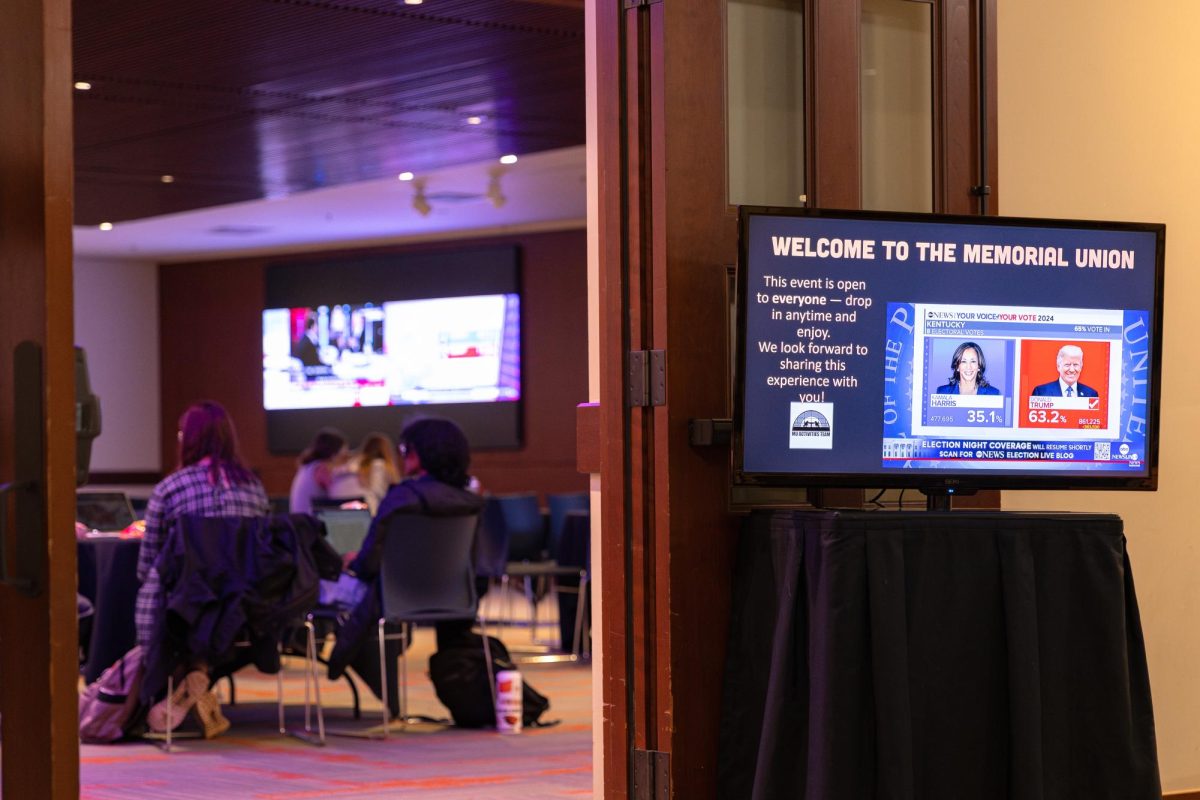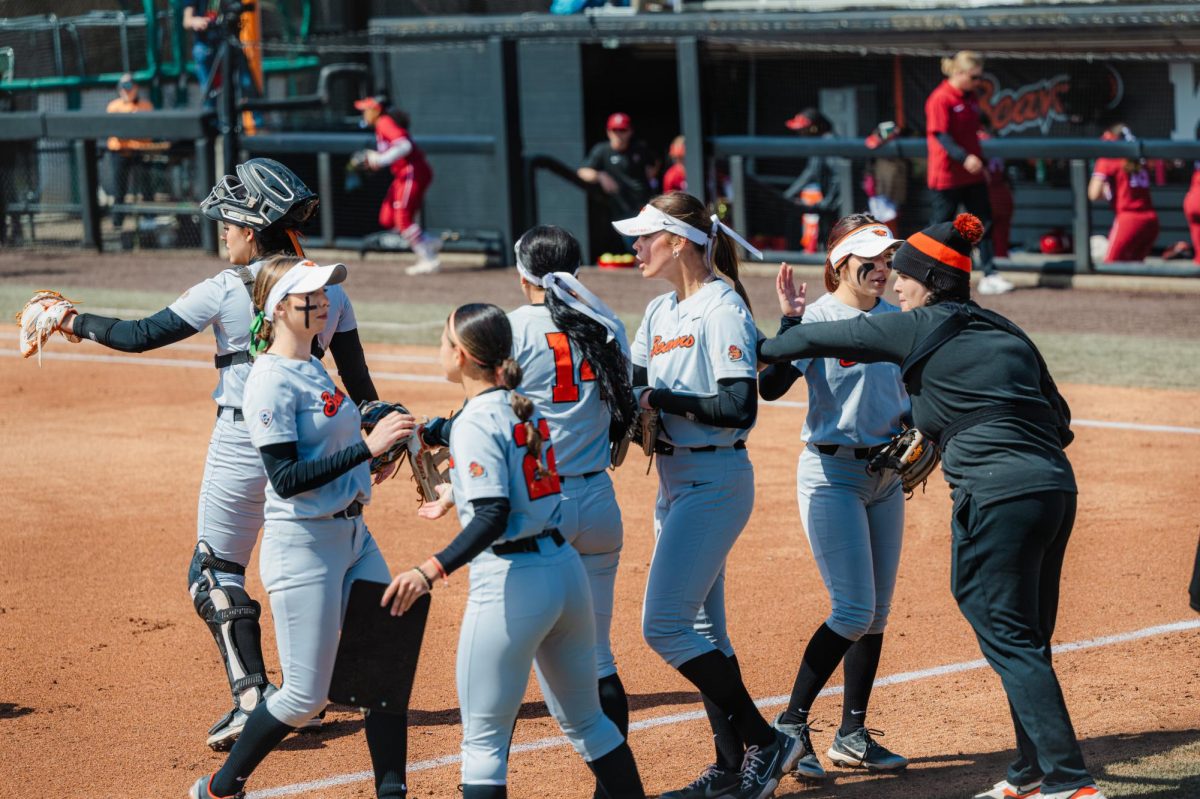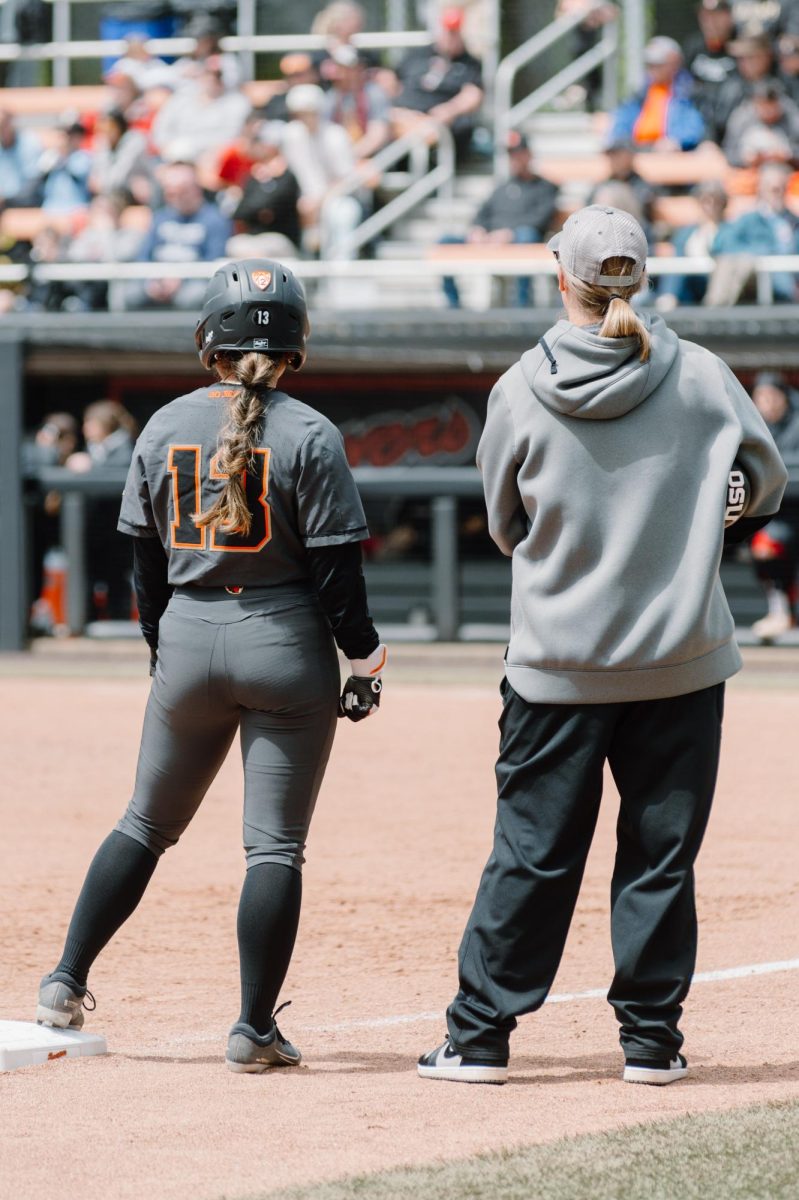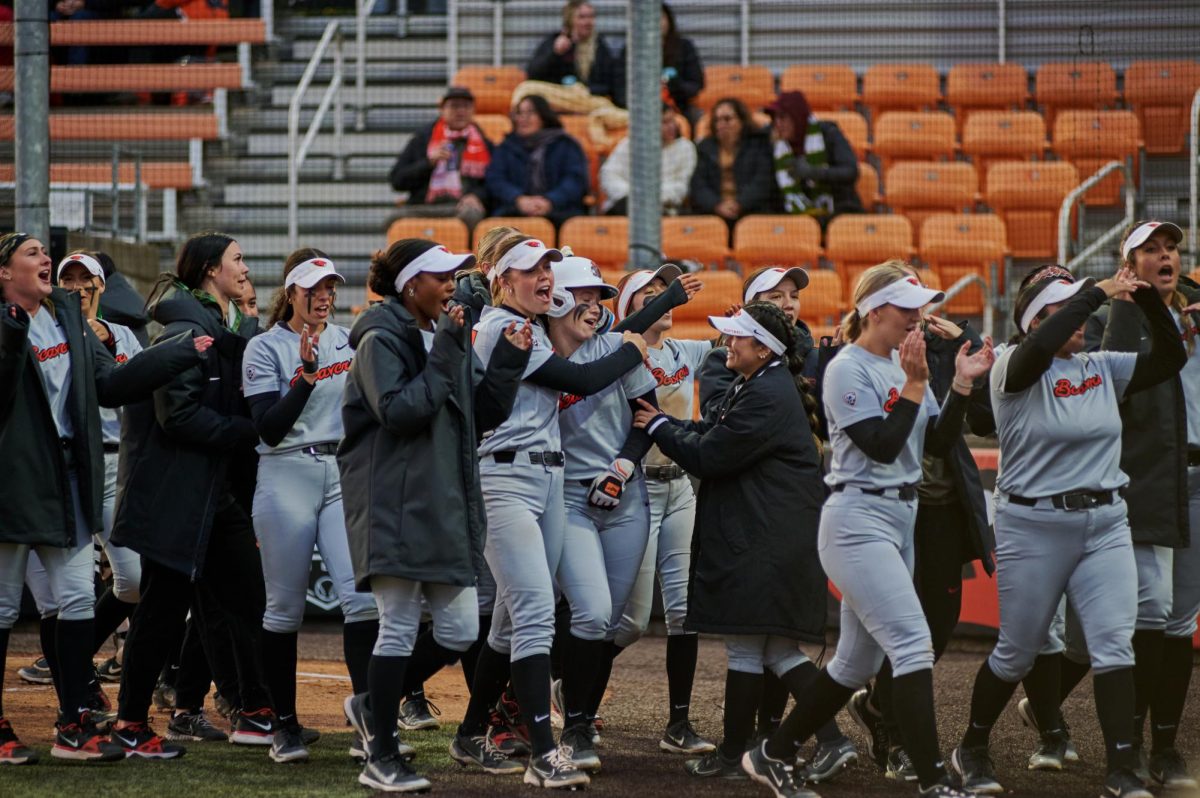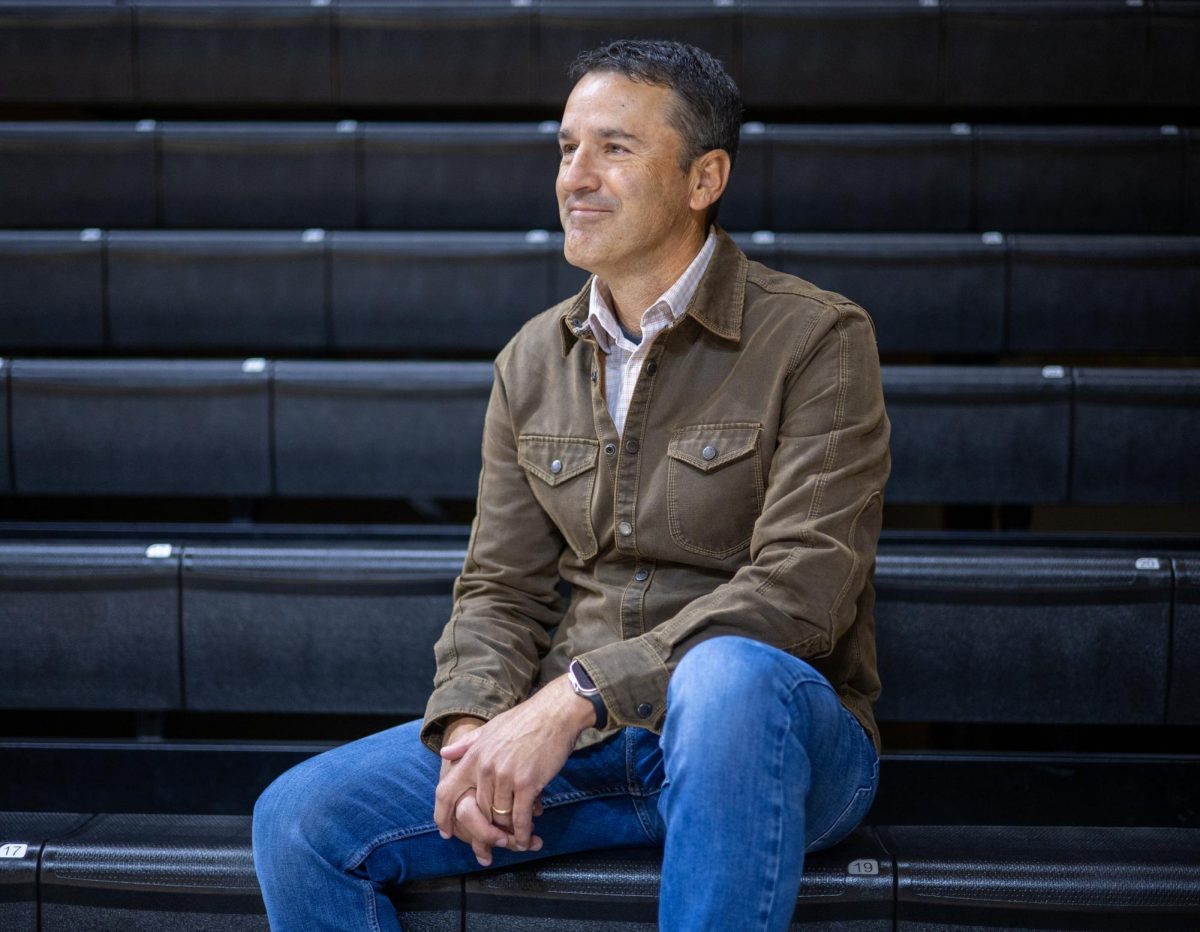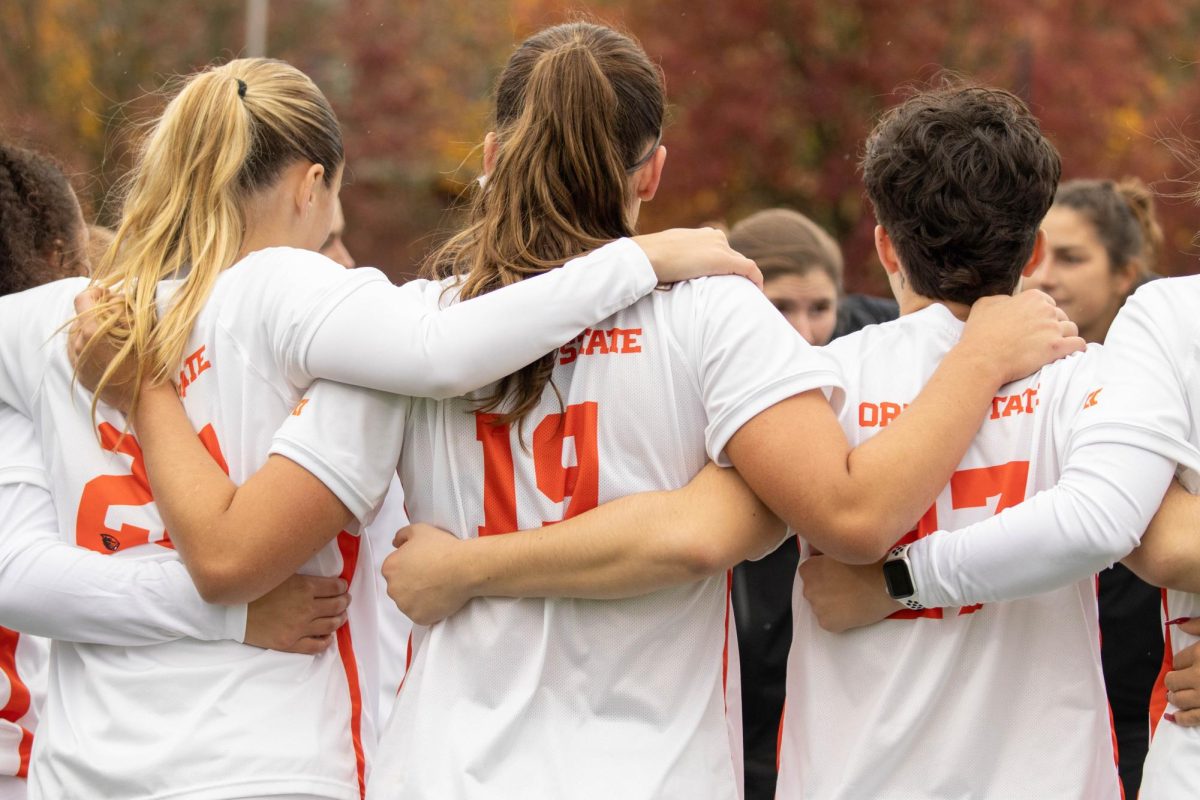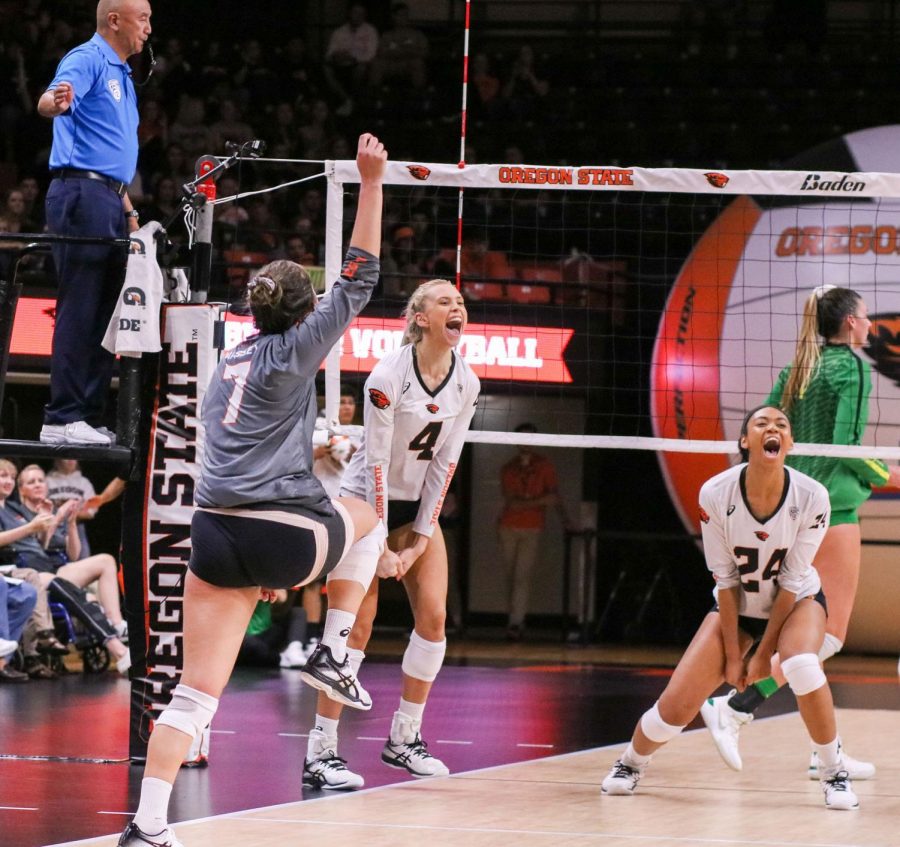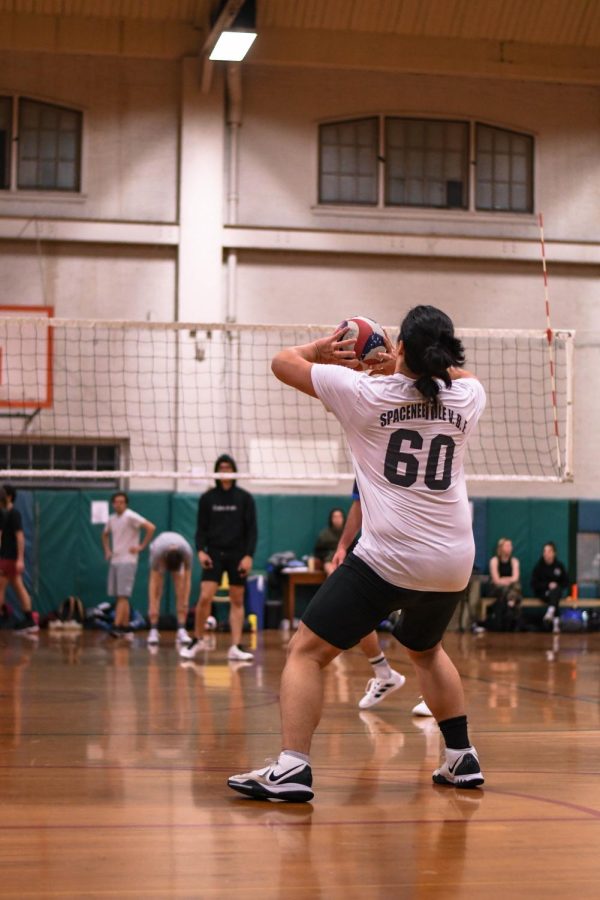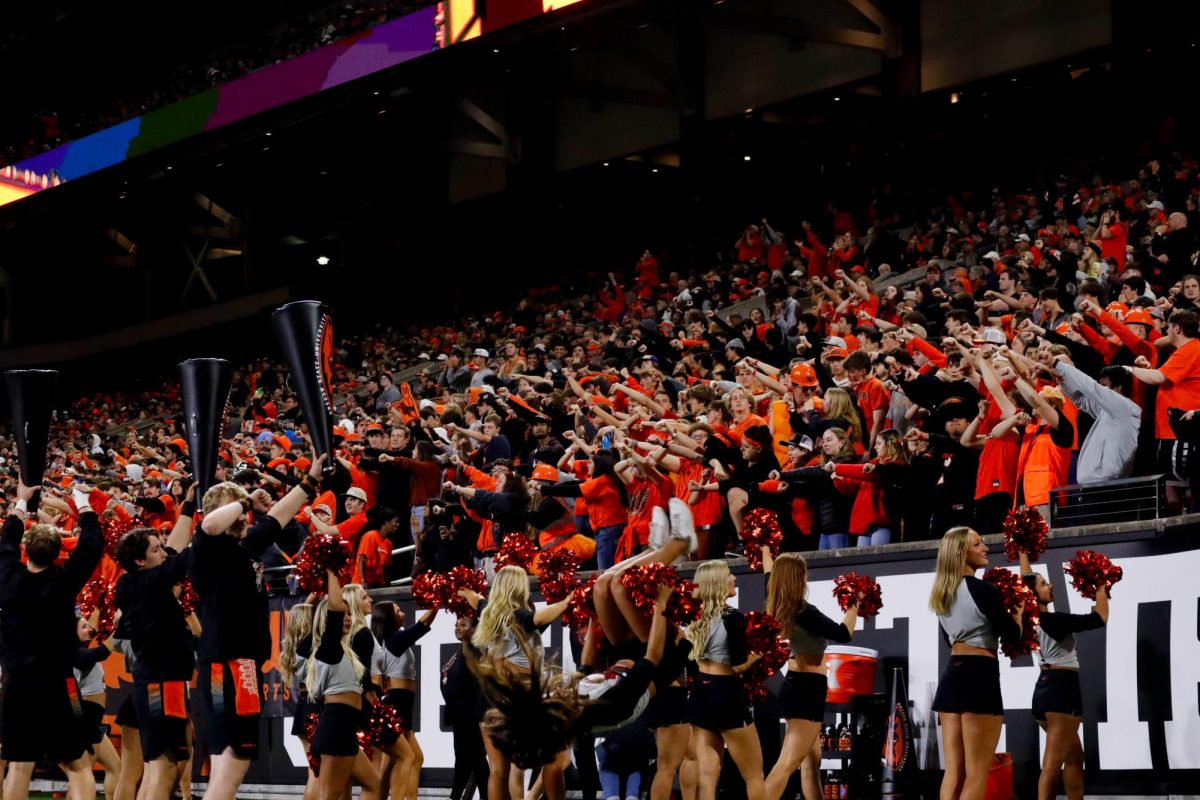OSU officials, experts weigh COVID-19 policies for fall term
Chunhuei Chi explains the ethos behind OSU’s covid policy outside the Alumni center on Friday, September 24th 2022. This year OSU has record high enrollment numbers for new students and flu season is just about to begin.
October 21, 2022
While Oregon State University officials are prepared for a potential surge in on-campus COVID-19 cases this fall, experts remain hopeful that the pandemic may be nearing its end.
In a joint statement via email, Vice President for University Relations and Marketing Steve Clark, Executive Director of Student Health Services Kelly Hower and Vice Provost for Student Affairs Dan Larson said OSU was well aware of the possibility of a surge in cases this fall.
“We know that COVID-19 will continue to have a presence within the university community,” Clark, Hower and Larson said about the University’s concerns. “As fall weather approaches and folks move to more indoor activities, there is a potential for an increase in cases.”
Professor Chunhuei Chi of OSU’s College of Public Health and Human Sciences agreed that if a surge in cases were to happen during fall term, it would likely not happen immediately.
“Because of the warm weather and the sunny weather, we can still have a lot of activities outdoors,” Chi said. “So I don’t expect the surge will come immediately.”
However, Chi, who is a professor in both the Global Health Program and Health Management and Policy Program, and director of OSU’s Center for Global Health, was optimistic in his outlook about the potential for a surge in cases.
“Many experts are kind of cautious,” Chi said, “Personally, I’m not too concerned about that.”
“Compared with other industrialized nations, the US has a relatively low vaccination rate,” Chi said, “But we have a high proportion of the population that have been infected and recovered, so that kind of supplements our immunity.”
According to Chi, while the current Omicron variant is more transmissible than previous variants, people infected with it are less likely to develop severe symptoms.
“For any virus to survive long term, they have to act like Omicron: high transmissibility, low fatalities,” Chi said.
Chi believes that, as long as Omicron remains the dominant variant, people who are not immunocompromised shouldn’t need to wear a mask in public. As a result, he thinks it’s unlikely that indoor mask mandates will return in the future.
However, he also doesn’t believe that masks will disappear entirely.
“We shouldn’t forget there is a portion of the population who is immunocompromised,” Chi said. “There are occasions where you might still see healthy people wearing masks, because the healthy people might have an infant, or an elderly or immunocompromised person in the household.”
To determine what prevention actions may be needed, OSU uses the Center for Disease Control’s COVID-19 levels. This system tracks the number of cases and hospitalizations in a community, and assigns them a COVID-19 level of low, medium, or high.
Currently, according to the CDC’s COVID Tracker website, Benton County is categorized as having a low level of COVID-19.
One tool in preventing a COVID-19 surge have been the Beaver Booster Blitz vaccination clinics. The events are a joint effort between OSU, Benton County and the Oregon Health Authority, according to Jenny Haubenreiser, senior director for Community Health and Well-being for OSU’s Division of Student Affairs.
According to Haubenreiser,while OSU provides the space and promotion for the events, the clinics themselves are provided by the OHA, in collaboration with Benton County.
For policies affecting OSU students, the university follows the guidelines set by OHA, along with recommendations from other organizations.
OSU employees, meanwhile, have to follow the rules set by the Occupational Safety and Health Administration.
According to Clark, Hower and Larson, should there not be a surge in COVID-19 cases this fall, the university would consider further relaxing COVID-19 policies.
“Current policies regarding vaccination requirements will regularly be reviewed with local public health authorities,” they said. “There also are OSHA policies in place for healthcare organizations we will follow.”
Currently, Dan Larson serves as COVID-19 response coordinator for OSU, a position that will continue to exist for the foreseeable future. In the long run, according to Clark, Hower and Larson, the COVID-19 response team is expected to become the Infectious Disease Response Team, as the need for a response specifically to COVID-19 diminishes.
“I think we are not totally out of the pandemic,” Chi said. “But I would say we’re in this transition towards the end, or the post-pandemic.”
He also said the pandemic brought with it a wide range of what he called “collateral damages,” both from the pandemic itself and policies put in place to limit its spread. For example, Chi cited a decline in quality of education, referring to a report published by Oregon Public Broadcasting, which found statewide that high school English Language Arts tests passing rates dropped about 10% as a result of the switch to remote education.
Chi was also worried by an increase in educational inequality, as a result of the switch to remote education.
“People with resources can still manage well in a remote online education,” Chi said. “But, not people without resources.”
While he said he was not opposed to measures designed to control COVID-19, Chi believes that “Now is the time we have to carefully and critically examine, ‘Does the benefit of those control measures outweigh the costs?’”
“We will not be able to eradicate the virus, meaning we have to live with the virus,” added Chi. “The question is: ‘How do we live with the virus safely?”

